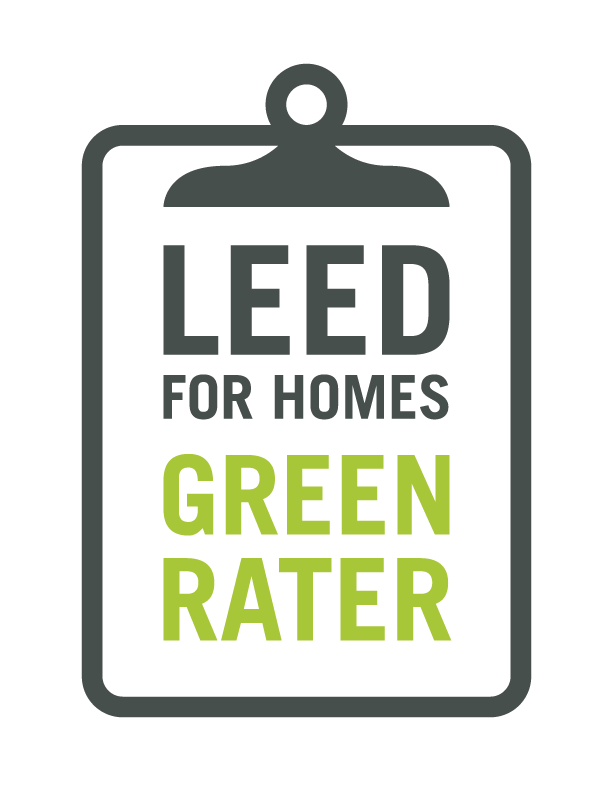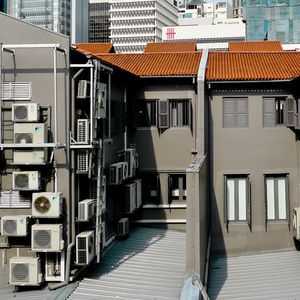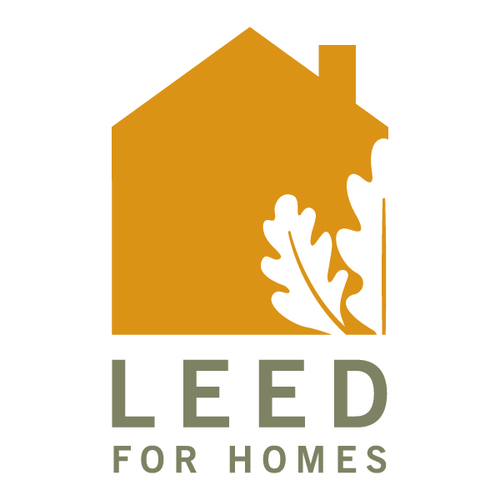
Now that all of you who read the first column in this series think you are experts at working the LEED for Homes system, I will show you some of the points that are much harder to qualify for along with a few that are pretty easy, but they are not very obvious and you have to know about them to take them.
For Experts Only – The Tough Credits
1. Design Charrette. It’s always a good idea to have a design charrette, but not always feasible on single-family projects, although the time and money spent to hold one will probably pay off in both first cost and operating energy savings. If you are doing a large development or a multifamily building, one charrette can cover all the homes and almost guarantees you a better project, money and energy savings, and a point on your score.
2. Design for Solar Orientation. The Anazasi did it almost a thousand years ago; I think we should be able to figure out how to design with sun in mind and pick up a point in the process. Why is this one so difficult?
3. Efficient hot water distribution. To get the 2 points for this you have to be very careful about where you locate all your hot water fixtures — preferably they will be close together — and make sure that the plumbing is designed to keep wasted water at a minimum. This can be tough, but if you design with an efficient hot water system in mind, it can be done.
4. Backdraft potential test. If you install unsealed fireplaces and wood stoves (not a good idea in a high performance house), you can get an extra point if you have a (very complicated) third-party test performed proving that it can’t backdraft. If you have a monster range hood without makeup air, don’t even bother with this one — it won’t pass.
5. Test ventilation and duct systems. If you have a third-party rater test the required whole-house, bathroom, and kitchen vent systems, and if the rater confirms that they meet ASHRAE 62.2 requirements, you can pick up 2 points. You can pick up another point for testing and balancing the HVAC duct system and confirming that it meets the designed flows at each register. Keep in mind that these tests aren’t inexpensive, and if they don’t come out right, you don’t get the points.
Documentation – Everyone’s Albatross
Just like voting in Chicago, do your LEED documentation early and often. The biggest problem that project teams have is getting their documentation together. When done as the job progresses, it doesn’t become a huge mountain to climb at the end, when everyone has moved on. I am the rater on projects that have been finished, sold, and occupied for over a year, and I’m still waiting on paperwork from my clients. If you pay for the certification, you may as well go ahead and get it.
Exemplary or “Double Secret” Credits – Needles in the Haystack
Throughout the LEED for Homes rating system there are points for “Exemplary Performance.” When you have done more than enough work to max out the points available in certain credits, you can take extra points in the ID section, although you can only take a total of 4 ID points, so don’t overdo it without getting the credit.
1. High-Performance Clothes Washer. If you use the performance path (as many people do) and you put in a very efficient clothes washer, you get to take 1½ ID credits. If you try to put in anything but 1 point in an ID credit line on the spreadsheet, you get an error message, but it will accept the 1.5 points and move on.
2. Extra Pest Control. Once you max out your 2 points in this category, you can take ½ point for each item, up to a total of 1 ID point.
3. Extra Irrigation Measures. Just like Pest Control, after you max out this credit, you can take ½ point, up to a maximum of 2 points in the ID section.
4. Framing Efficiencies. Following on the heels of Pest Control and Irrigation, if you max out the framing efficiency credits you can take extra points in the ID section.
And Don’t Forget the Prerequisites!
LEED does have a few critical prerequisites – no matter how well you do, if you miss just one of these, you are out of luck. Make sure you understand what is required and that it gets done in the field.
1. Durability evaluation form and checklist. I have problems with this particular requirement of the program, but it’s a rule that you have to follow.
2. Erosion control. Most of this is a code requirement, but if it isn’t where you are, make sure to do it.
3. No invasive plants. Get the list from your extension service and make sure none get planted on your site.
4. Energy Star. Unless you use the prescriptive path, the house must meet the requirements for the Energy Star Homes program, although it doesn’t actually have to be labeled as such. Until the new LEED for Homes version is released next year, you don’t need to move to Energy Star Version 2.5 or 3, but that will likely be required in late 2012.
5. Framing waste order factor. This calculation has to be done for each project. I am dubious of its value, but you’ve gotta do it.
6. FSC letter to vendors. Write it and send it out to everyone who sells you wood for the job.
7. Waste management planning and documentation. Check into recycling opportunities and either save all your dump manifests or get monthly reports from you haulers and recyclers.
8. Combustion venting. Doors on all fireplaces and wood stoves, no ventless heaters or fireplaces, and no open-combustion appliances or heaters connected to the living space. This helps to keep you from killing your clients.
9. Basic ventilation. Hire an HVAC contractor who knows his stuff or buy the ASHRAE 62.2 standard, read it and follow it. It’s not that difficult.
10. Manual D duct design. Although this is a code requirement, it’s often neglected. Use the same knowledgeable HVAC contractor, or better yet, hire an independent consultant to design and size the system and then put it out for pricing. Then make sure they do what it says.
11. Radon vents in zone 1. If your building is in a radon hazard area, you have to put the vent system in under the slab or in the crawl space. If you forget, you are in for an expensive surprise at the end of the job.
12. No HVAC in the Garage. Keep the furnace and ducts out of the garage; see Combustion Venting above about not killing your clients.
13. Operations training. You have to either spend an hour with your client or have an outline for an hour of training and have a written owner’s manual. That’s a good business policy, and the hour you spend with them will probably save you lots of phone calls in the future.
*Are We Really Cheating?
Well, no, we’re not cheating to get certification. But LEED is a complex animal, takes some effort to figure out, and requires somewhere between a little and whole lot of extra time and energy to manage, depending on how organized your operation is.
Larger contractors with administrative staff and architectural firms that are used to the documentation requirements of commercial projects tend to have an easier time keeping up with everything. Smaller single-family builders, particularly in the current economic climate, often struggling just to keep each job on track and on budget, have more trouble keeping up with the documentation and required field operations to meet certification.
LEED is not for the faint of heart or those with weak administrative skills. But it can help make a home better and give the project team some ammunition for future marketing when followed through to completion.
Weekly Newsletter
Get building science and energy efficiency advice, plus special offers, in your inbox.















3 Comments
i don't quite get the
i don't quite get the pushback against 'cheating' - LEED is a system set up to be gamed, just like any other program (yes, even passivhaus). developers game LEED all the time - most LEED points for least investment - leading to buildings which might not save much, if any, operational energy but have a slightly lower embodied energy. whoop. di. do.
for those interested in pushing beyond the basics, carl's 'cheat sheet' directs how this can be done. much of it is also just solid building practices, so if these can be incorporated into the typical project, it's already a step in the right direction.
now the bigger question: are combined certifications (e.g. LEED + BuiltGreen, passivhaus + LEED, passivhaus + minergie + LBC) worth the cost?
HE Clothes Washer
Carl,
Where did you find the information for high-efficiency clothes washer ID credits?
In the Errata? CIR/ID Database? I can't find anything.
Clothes Washer
Brett - Check the LEED reference guide in the prescriptive path of EA there is a note for exemplary performance that provides details on the washer specs. If you use the prescriptive path, the ID points aren't available, but if you go with a HERS rating, you can take them since you would otherwise lose the points.
Log in or create an account to post a comment.
Sign up Log in